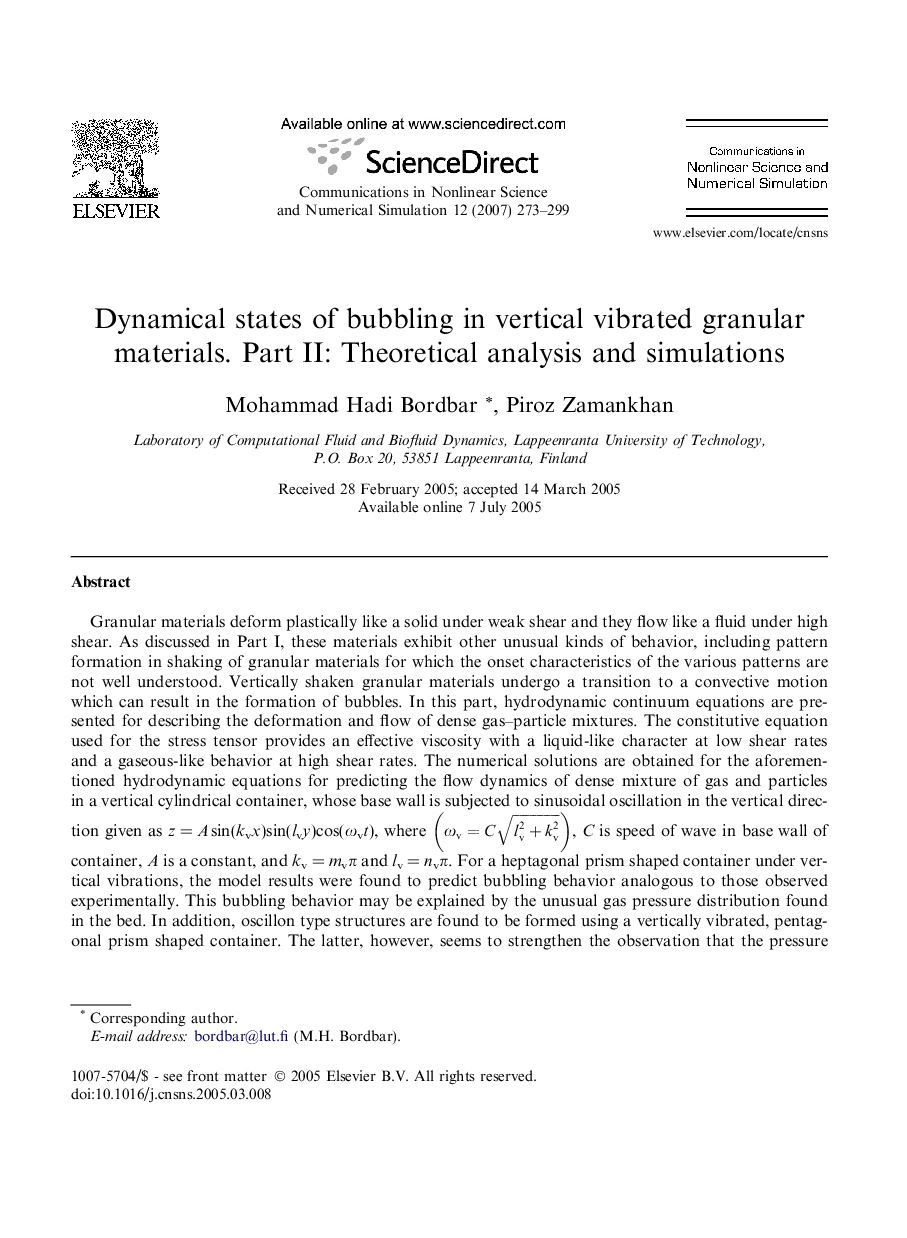| Article ID | Journal | Published Year | Pages | File Type |
|---|---|---|---|---|
| 760210 | Communications in Nonlinear Science and Numerical Simulation | 2007 | 27 Pages |
Granular materials deform plastically like a solid under weak shear and they flow like a fluid under high shear. As discussed in Part I, these materials exhibit other unusual kinds of behavior, including pattern formation in shaking of granular materials for which the onset characteristics of the various patterns are not well understood. Vertically shaken granular materials undergo a transition to a convective motion which can result in the formation of bubbles. In this part, hydrodynamic continuum equations are presented for describing the deformation and flow of dense gas–particle mixtures. The constitutive equation used for the stress tensor provides an effective viscosity with a liquid-like character at low shear rates and a gaseous-like behavior at high shear rates. The numerical solutions are obtained for the aforementioned hydrodynamic equations for predicting the flow dynamics of dense mixture of gas and particles in a vertical cylindrical container, whose base wall is subjected to sinusoidal oscillation in the vertical direction given as z = A sin(kvx)sin(lvy)cos(ωvt ), where ωv=Clv2+kv2, C is speed of wave in base wall of container, A is a constant, and kv = mvπ and lv = nvπ. For a heptagonal prism shaped container under vertical vibrations, the model results were found to predict bubbling behavior analogous to those observed experimentally. This bubbling behavior may be explained by the unusual gas pressure distribution found in the bed. In addition, oscillon type structures are found to be formed using a vertically vibrated, pentagonal prism shaped container. The latter, however, seems to strengthen the observation that the pressure distribution plays a key role in deformation and flow of dense mixtures of gas and particles under vertical vibrations.
